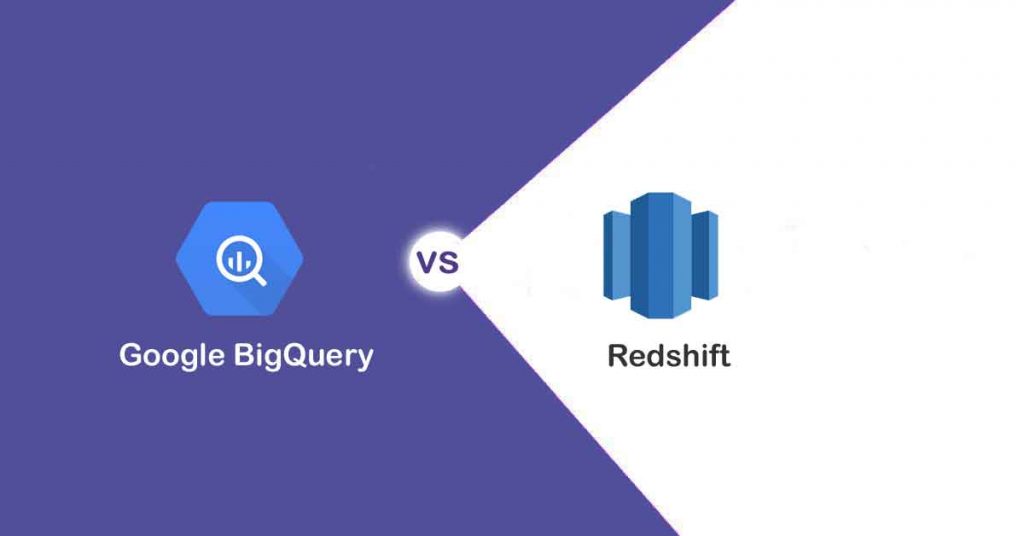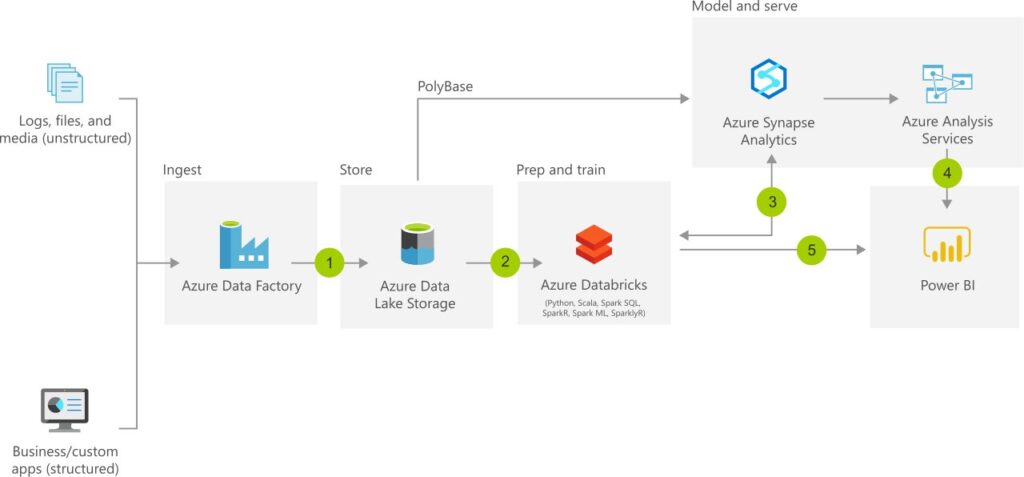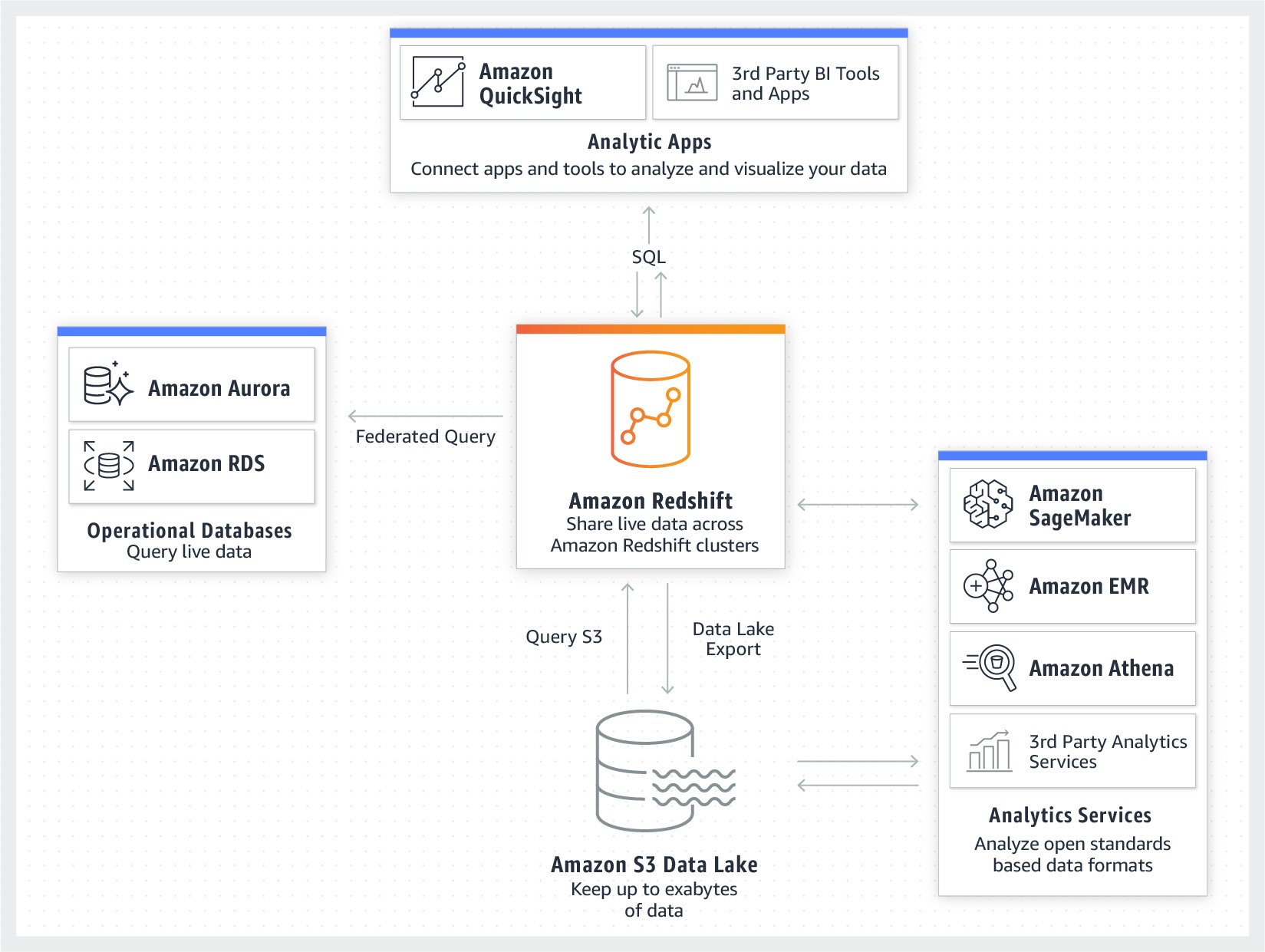What is Amazon Redshift and Why Look for Alternatives?
Amazon Redshift is a robust, fully managed data warehousing solution offered by Amazon Web Services (AWS). It enables businesses to analyze vast amounts of data using standard SQL and business intelligence (BI) tools, making it a popular choice for many organizations. However, there are reasons why companies might explore Amazon Redshift alternatives.
First, while Amazon Redshift offers a wide range of features, it may not always be the most cost-effective solution for every business. Depending on the scale of data and usage patterns, alternative data warehousing solutions might provide better value for money. Additionally, some organizations may prefer solutions that offer greater flexibility in terms of data types and analytics tools, or that are better suited to specific industries or use cases.
Second, while Amazon Redshift is highly scalable, it may not always deliver the required performance for specific workloads. Some alternatives may offer better performance for particular data types, query patterns, or concurrent users. Furthermore, certain organizations may require more granular control over resource allocation or more advanced performance optimization features.
Lastly, data security and compliance are critical factors for many businesses. While Amazon Redshift provides robust security features, some organizations may need to comply with specific regulations or standards that are better supported by alternative solutions. Additionally, some companies might prefer solutions that offer more fine-grained access control or advanced encryption features.
In summary, Amazon Redshift is a powerful and popular data warehousing solution, but it may not always be the best fit for every organization. Factors such as cost, performance, and security should be carefully evaluated when considering Amazon Redshift alternatives.
Snowflake: A Fully Managed Data Warehousing Platform
Snowflake is a fully managed, cloud-based data warehousing platform that offers a compelling alternative to Amazon Redshift. As a fully managed solution, Snowflake eliminates the need for businesses to manage infrastructure, allowing them to focus on data analytics and insights. Snowflake’s architecture separates compute and storage resources, enabling near-instant, seamless scaling and ensuring optimal performance for various workloads.
One of Snowflake’s key advantages is its support for both SQL and NoSQL data. This flexibility allows organizations to store, process, and analyze diverse data types, including structured, semi-structured, and unstructured data, without the need for complex data transformations or ETL processes. Additionally, Snowflake offers robust security features, such as always-on, enterprise-grade encryption and granular access control, ensuring the confidentiality and integrity of sensitive data.
Snowflake’s seamless integration with popular business intelligence tools, data science platforms, and data lake services, such as Tableau, Looker, Power BI, and Databricks, makes it an attractive alternative for organizations looking to modernize their data warehousing and analytics infrastructure. Furthermore, Snowflake’s support for standard SQL and ANSI SQL enables organizations to leverage existing SQL skills and tools, simplifying the transition to a new data warehousing platform.
In summary, Snowflake is a fully managed, cloud-based data warehousing platform that offers scalability, flexibility, and robust security features. Its support for SQL and NoSQL data, seamless integration with popular analytics tools, and ease of use make it a strong contender among Amazon Redshift alternatives.
Google BigQuery: Powerful Analytics Backed by Machine Learning
Google BigQuery is a serverless, highly scalable, and fully managed data warehousing solution that offers real-time analytics capabilities and seamless integration with Google Cloud AI and machine learning services. As an alternative to Amazon Redshift, Google BigQuery provides several advantages that make it an attractive choice for businesses looking for advanced analytics and machine learning capabilities.
One of the key features of Google BigQuery is its serverless architecture, which automatically manages infrastructure and resources, allowing businesses to focus on data analytics and insights. Additionally, Google BigQuery supports real-time analytics, enabling organizations to process and analyze streaming data with minimal latency. This feature is particularly useful for businesses that require real-time insights to make informed decisions.
Google BigQuery also offers robust security features, such as encryption at rest and in transit, identity and access management, and audit logging, ensuring the confidentiality and integrity of sensitive data. Furthermore, Google BigQuery is fully integrated with Google Cloud AI and machine learning services, enabling organizations to leverage advanced analytics and machine learning capabilities to gain deeper insights into their data.
Google BigQuery’s seamless integration with popular business intelligence tools, data science platforms, and data lake services, such as Tableau, Looker, Power BI, and Databricks, makes it an attractive alternative for organizations looking to modernize their data warehousing and analytics infrastructure. Moreover, Google BigQuery supports standard SQL and ANSI SQL, enabling organizations to leverage existing SQL skills and tools, simplifying the transition to a new data warehousing platform.
In summary, Google BigQuery is a serverless, highly scalable, and fully managed data warehousing solution that offers real-time analytics capabilities and integration with Google Cloud AI and machine learning services. Its robust security features, support for standard SQL, and seamless integration with popular analytics tools make it a strong contender among Amazon Redshift alternatives.
Microsoft Azure Synapse Analytics: A Unified Analytics Service
Microsoft Azure Synapse Analytics is a unified analytics service that combines data warehousing, big data, and analytics, providing a single platform for various data-driven workloads. As an alternative to Amazon Redshift, Azure Synapse Analytics offers several advantages that make it an attractive choice for businesses looking for a comprehensive and integrated analytics solution.
One of the key features of Azure Synapse Analytics is its ability to handle both structured and unstructured data, providing a unified platform for data integration, data warehousing, and big data analytics. This capability enables organizations to process and analyze diverse data types, including relational, graph, and time-series data, without the need for complex data transformations or ETL processes.
Azure Synapse Analytics also offers robust security features, such as encryption at rest and in transit, identity and access management, and audit logging, ensuring the confidentiality and integrity of sensitive data. Furthermore, Azure Synapse Analytics is fully integrated with Microsoft’s Power BI and Azure Machine Learning services, enabling organizations to leverage advanced analytics and machine learning capabilities to gain deeper insights into their data.
Azure Synapse Analytics’ seamless integration with popular business intelligence tools, data science platforms, and data lake services, such as Tableau, Looker, Power BI, and Databricks, makes it an attractive alternative for organizations looking to modernize their data warehousing and analytics infrastructure. Moreover, Azure Synapse Analytics supports standard SQL and T-SQL, enabling organizations to leverage existing SQL skills and tools, simplifying the transition to a new data warehousing platform.
In summary, Azure Synapse Analytics is a unified analytics service that combines data warehousing, big data, and analytics, providing a single platform for various data-driven workloads. Its robust security features, support for standard SQL, and seamless integration with popular analytics tools make it a strong contender among Amazon Redshift alternatives.
How to Choose the Right Amazon Redshift Alternative for Your Business
When considering Amazon Redshift alternatives, it’s essential to evaluate several factors to ensure that the chosen solution meets your organization’s unique requirements. Here are some key considerations to help you make an informed decision:
Cost
Cost is often a primary concern for businesses evaluating data warehousing solutions. It’s essential to consider not only the upfront costs but also the ongoing costs associated with storage, compute resources, and data transfer. Some solutions may offer a more cost-effective option, especially for organizations with lower data volumes or less complex analytics requirements.
Performance
Performance is another critical factor to consider when selecting an Amazon Redshift alternative. It’s essential to evaluate the solution’s ability to handle large data volumes, support concurrent users, and provide fast query performance. Additionally, consider the solution’s scalability and ability to adapt to changing data volumes and analytics requirements.
Security
Security is a top priority for businesses handling sensitive data. Ensure that the chosen solution offers robust security features, such as encryption at rest and in transit, identity and access management, and audit logging. Additionally, consider the solution’s compliance with relevant data privacy regulations and industry standards.
Integration with Existing Systems and Tools
Integration with existing systems and tools is crucial for ensuring a seamless transition to a new data warehousing solution. Evaluate the solution’s compatibility with your organization’s existing business intelligence tools, data science platforms, and data lake services. Additionally, consider the solution’s support for standard SQL and other data query languages.
User Training and Support
User training and support are essential for ensuring a successful transition to a new data warehousing solution. Evaluate the solution’s documentation, training resources, and support options, such as online forums, technical support, and professional services.
In summary, when selecting an Amazon Redshift alternative, it’s essential to consider factors such as cost, performance, security, integration with existing systems and tools, and user training and support. By carefully evaluating these factors, you can ensure that the chosen solution meets your organization’s unique requirements and provides long-term value.
Implementing Selected Amazon Redshift Alternatives: Best Practices and Tips
Once you’ve selected an Amazon Redshift alternative, it’s essential to plan and execute the implementation carefully to ensure a smooth transition. Here are some best practices and tips to help you successfully implement your chosen data warehousing solution:
Best Practices for Data Migration
Data migration is a critical aspect of implementing a new data warehousing solution. Here are some best practices to follow:
- Create a detailed data migration plan that outlines the steps involved, the data to be migrated, and the expected timeline.
- Ensure that the data is properly cleaned, transformed, and validated before migration to avoid data quality issues.
- Test the data migration process thoroughly in a non-production environment before executing it in production.
- Monitor the data migration process closely to ensure that it completes successfully and without data loss or corruption.
Performance Optimization Tips
Performance optimization is crucial for ensuring that your new data warehousing solution delivers fast query performance and meets your organization’s analytics requirements. Here are some tips to help you optimize performance:
- Ensure that the data is properly indexed and partitioned to improve query performance.
- Monitor query performance regularly and identify any bottlenecks or performance issues.
- Optimize query performance by fine-tuning query parameters, such as the query timeout, parallelism, and caching settings.
- Consider using caching solutions, such as Redis or Memcached, to improve query performance for frequently accessed data.
User Training and Adoption
User training and adoption are essential for ensuring a successful implementation of your new data warehousing solution. Here are some tips to help you train and onboard users:
- Create a comprehensive training plan that covers the features and capabilities of the new solution.
- Provide hands-on training sessions, such as workshops or webinars, to help users get familiar with the new solution.
- Offer ongoing support and resources, such as documentation, tutorials, and user forums, to help users stay up-to-date with the new solution.
- Encourage user feedback and suggestions to improve the user experience and adoption of the new solution.
In summary, implementing an Amazon Redshift alternative requires careful planning, execution, and monitoring. By following best practices for data migration, performance optimization, and user training and adoption, you can ensure a successful implementation of your chosen data warehousing solution.
Monitoring and Maintaining Your Chosen Data Warehousing Solution
Once you’ve implemented your chosen Amazon Redshift alternative, it’s essential to monitor and maintain the solution to ensure optimal performance, security, and reliability. Here are some key aspects to consider:
Performance Monitoring
Performance monitoring is crucial for identifying and resolving any performance issues that may arise. Here are some tips for monitoring performance:
- Set up performance monitoring tools, such as cloud monitoring services or third-party monitoring tools, to monitor the solution’s performance in real-time.
- Monitor key performance indicators (KPIs), such as query response time, data transfer rates, and resource utilization, to identify any performance issues.
- Configure alerts and notifications to notify you of any performance issues or anomalies.
- Regularly review performance metrics and trends to identify any patterns or issues that may require attention.
Resource Management
Effective resource management is essential for ensuring that the solution performs optimally and scales as needed. Here are some tips for managing resources:
- Monitor resource utilization, such as CPU, memory, and storage, to ensure that the solution has sufficient resources to handle the workload.
- Configure resource limits and thresholds to prevent resource exhaustion or overprovisioning.
- Use automation tools, such as autoscaling or load balancing, to ensure that the solution scales up or down as needed to handle changing workloads.
- Regularly review resource usage and trends to identify any patterns or issues that may require attention.
Security Updates
Security is a top priority for any data warehousing solution. Here are some tips for maintaining security:
- Regularly apply security updates and patches to ensure that the solution is up-to-date and secure.
- Configure access controls and permissions to ensure that only authorized users have access to the solution.
- Monitor security logs and alerts to identify any security issues or anomalies.
- Regularly review security policies and procedures to ensure that they are up-to-date and effective.
In summary, monitoring and maintaining your chosen data warehousing solution is essential for ensuring optimal performance, security, and reliability. By following best practices for performance monitoring, resource management, and security updates, you can ensure that your solution meets your organization’s data warehousing needs and provides long-term value.
Assessing the Success of Your Data Warehousing Migration
Once you’ve implemented your chosen Amazon Redshift alternative, it’s essential to evaluate the success of the migration. Here are some key factors to consider when assessing the success of your data warehousing migration:
Key Performance Indicators (KPIs)
Monitoring KPIs is crucial for evaluating the performance of your new data warehousing solution. Here are some KPIs to consider:
- Query response time: Measure the time it takes for queries to complete and compare it to the performance of your previous solution.
- Data transfer rates: Measure the time it takes to transfer data into and out of the solution and compare it to the performance of your previous solution.
- Resource utilization: Monitor resource utilization, such as CPU, memory, and storage, to ensure that the solution has sufficient resources to handle the workload.
User Feedback
User feedback is essential for evaluating the usability and user experience of the new solution. Here are some ways to gather user feedback:
- Conduct surveys or focus groups to gather feedback on the new solution’s usability and user experience.
- Monitor user adoption rates and identify any barriers to adoption.
- Encourage users to provide feedback and suggestions for improvement.
Return on Investment (ROI)
Calculating the ROI of your data warehousing migration is essential for evaluating the financial success of the project. Here are some factors to consider when calculating ROI:
- Cost savings: Calculate the cost savings associated with the new solution, such as reduced hardware, maintenance, and licensing costs.
- Revenue generation: Calculate the revenue generation associated with the new solution, such as increased sales, improved customer satisfaction, and new revenue streams.
- Intangible benefits: Consider the intangible benefits of the new solution, such as improved agility, scalability, and innovation.
In summary, assessing the success of your data warehousing migration is essential for ensuring that the new solution meets your organization’s data warehousing needs and provides long-term value. By monitoring KPIs, gathering user feedback, and calculating ROI, you can evaluate the success of the migration and make data-driven decisions about future investments in data warehousing solutions.





